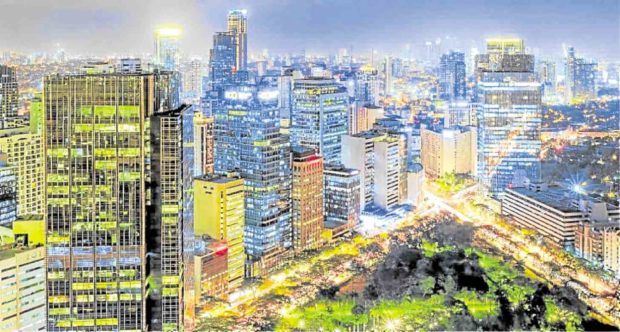Gains from urban renewal
Colliers has seen an aggressive development of integrated communities within and outside Metro Manila.
Developers are scouting for idle private properties or government assets that they can acquire and redevelop into masterplanned communities.
This is a strategy implemented by real estate firms even in the past—redeveloping a mothballed power facility into a thriving residential community; transforming an idle textile mills into a fully-developed outsourcing hub; repurposing the location of a former international school into a mixed-use property along the periphery of Makati; redeveloping the old site of a provincial capitol into a mixed-use project in eastern Metro Manila; transforming a food terminal into a business community; and redeveloping a former race track into a lifestyle, office, and residential community in Makati City.
Other areas repurposed or redeveloped into masterplanned communities include a former rubber factory, a sugar mill, old airports and runways, and a town devastated by lahar.
Shift in mindset
The fast evolving demands of the workforce and households living in key cities play a crucial role in driving a shift in the mindset and strategies of developers.
Article continues after this advertisementProperty firms saw the need to add value to the usual standalone buildings. Market demands dictate that they build malls, residential condominiums, and institutional facilities such as schools and hospitals alongside offices. Residents’ rising disposable incomes have enhanced their standards of living and reinforced their demand for convenience, accessibility and exclusivity, features that only a masterplanned community can provide.
Article continues after this advertisementModern dwellers now prefer to live, work, dine and shop in a single community surrounded by upscale facilities, spacious open area, green surroundings and energy-efficient infrastructure—all done by private developer-led masterplanning. In these communities, integration prevails over seclusion as the middle-class family upgrades to condominiums from house and lots.
Significant contributions
To serve this rising demand, property firms initially plan to just redevelop old properties into estates that house offices, residential towers, malls and other institutional facilities.
In the process, these communities also contribute to faster economic growth of a certain area. The developers’ construction of office, residential and institutional properties alone stoke the construction sector, which has tremendous multiplier effects to the local economy.
Hundreds of people are hired and more are employed by allied businesses. These projects also indicate the rapid urbanization in a locality, and support facilities such as offices and malls need to be constructed to cater to the expansion of business activities.
In some integrated communities in the provinces, house and lot projects are offered within townships, expanding options of Filipino investors and end-users.
Economic expansion
The Philippine economy has been expanding by about 6.3 percent since 2010. In 2019, the economy recorded its slowest growth in about eight years. We are confident that the current administration wants to end its term on a high note and this can only be achieved by ramped up public infrastructure spending. With about 6 percent to 7 percent of annual gross domestic product (GDP) likely to be spent on infrastructure in the next three years, we see real estate being among the major beneficiaries.
To partially achieve its goal, the government is expected to be more active in putting land parcels or old, idle properties out to tender to private developers as it intends to raise additional revenues for its massive infrastructure development and Universal Healthcare (UHC) program. This is one option that local developers should also explore with city and municipal governments.
Township strategy
This massive township development strategy complemented by the government’s infrastructure program should benefit not just Metro Manila but also other key areas outside the capital region.
Given the expansion plans of property developers and projects lined up by the government between 2020 and 2025, we see the economies of Pampanga, Tarlac, Cavite, Laguna, Batangas in Luzon benefiting from this public-private partnership. The benefits should also trickle down to Bacolod, Cebu, Iloilo and Davao.
Overall, we see the expansion of the country’s economy moving in step with the development of these sustainable, integrated communities across urban areas in the Philippines. Township creation, infrastructure implementation, and economic decentralization should all contribute to achieving the elusive inclusive growth.
The author is the research head of Colliers International Philippines. Send feedback to [email protected]
